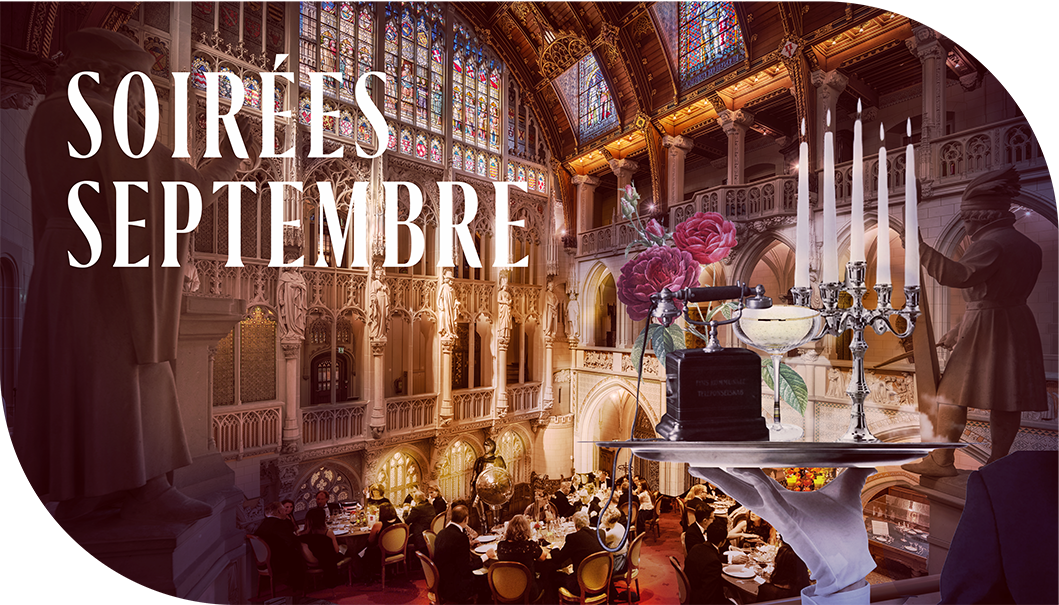Dress code during the September tradition
The dress code for the Soirées Septembre is "black tie. Entirely according to the etiquette of the Van Zuylen van Nijevelt-de Rothschild family! In modern terms: men in tuxedos, women in longcoats. For the guests of the Baron and Baroness, during the 'September sojourn' of the last century, this was no problem at all. This was part of their standard wardrobe. For those less cut and dried, below is an explanation.
Dress code
Between roughly 1900 and 1950, guests at De Haar were expected to appear at dinner in white tie. A dress suit, with shirt with stand-up collar, starched front and a white hand-knotted bow tie. Around the wrists no watch but cufflinks with their own family crest. Ladies wore a "large" evening suit: a long sleeveless gown with cleavage and tasteful jewelry from their own collection.
Black tie
Beginning in the 1960s, black tie became the standard for September dinners, which, in its full glory, meant for the men a tuxedo jacket with pointed or shawl lapels in satin. A black "self-tie" to go with a snow-white shirt with blind fastening, flat collar and turned-down double cuffs. Pants (never with a belt) with a silk trim along the legs. Underneath, black patent shoes with laces and leather sole and black stockings, preferably silk. One wore silver or platinum accessories such as cufflinks and shirt buttons. The ladies in long evening gowns in muted colors.
The dress code, or desired attire, always referred to that of the man. The woman was then expected to know how to dress then. It was important that the hair was not combed in public and that the shoulders were hair-free.At dinner, long hair should always be tied up. In addition, when it came to the use of perfume: less is more. It was never allowed that perfume scents were stronger than those of the courses served.

